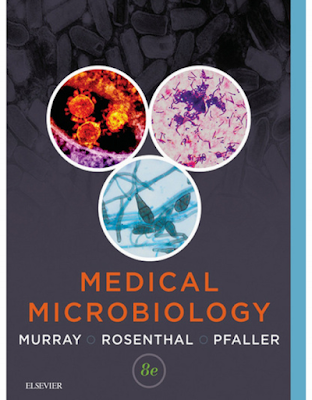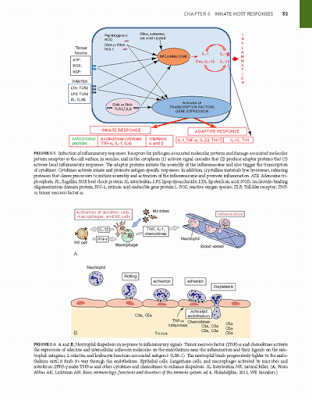by Patrick R. Murray PhD (Author), Ken S. Rosenthal PhD (Author), Michael A. Pfaller MD (Author)
Our knowledge about microbiology and immunology is constantly growing, and by building a good foundation of understanding in the beginning, it will be much easier to understand the advances of the future.
Medical microbiology can be a bewildering field for the novice. We are faced with many questions when learning microbiology: How do I learn all the names? Which infectious agents cause which diseases? Why? When? Who is at risk? Is there a treatment? However, all these concerns can be reduced to one essential question: What information do I need to know that will help me understand how to diagnose and treat an infected patient?
Certainly, there are a number of theories about what a student needs to know and howto teach it, which supposedly validates the plethora of microbiology textbooks that have flooded the bookstores in recent years. Although we do not claim to have the one right approach to teaching medical microbiology (there is truly no one perfect approach to medical education), we have founded the revisions of this textbook on our experience gained through years of teaching medical students, residents, and infectious disease fellows, as well as on the work devoted to the seven previous editions. We have tried to present the basic concepts of medical microbiology clearly and succinctly in a manner that addresses different types of learners.
The text is written in a straightforward manner with, it is hoped, uncomplicated explanations of difficult concepts. In this edition, we challenged ourselves to improve the learning experience even more. We are using the new technology on StudentConsult. com (e-version) to enhance access to the material. New to this edition, chapter summaries and learning aids are placed at the beginning of each of the microbe chapters, and on the e-version these are keyed to the appropriate sections in the chapter. In addition, many of the figures are enhanced to assist learning. Details are summarized in tabular format rather than in lengthy text, and there are colorful illustrations for the visual learner. Clinical Cases provide the relevance that puts reality into the basic science. Important points are emphasized in boxes to aid students, especially in their review, and the study questions, including Clinical Cases, address relevant aspects of each chapter. Each section (bacteria, viruses, fungi, parasites) begins with a chapter that summarizes microbial diseases, and this also provides review material.
Our understanding of microbiology and immunology is rapidly expanding, with new and exciting discoveries in all areas. We used our experience as authors and teachers to choose the most important information and explanations for inclusion in this textbook. Each chapter has been carefully updated and expanded to include new, medically relevant discoveries. In each of these chapters, we have attempted to present the material that we believe will help the student gain an interest in as well as a clear understanding of the significance of the individual microbes and their diseases. With each edition of Medical Microbiology we refine and update our presentation. There are many changes to the eighth edition, both in the print and e-versions of the book. The book starts with a general introduction to microbiology and new chapters on the human microbiome and epidemiology of infectious diseases.
The human microbiome (that is, the normal population of organisms that populate our bodies) can now be considered as another organ system with 10 times as many cells as human cells. This microbiota educates the immune response, helps digest our food, and protects us against more harmful microbes. Additional chapters in the introductory section introduce the techniques used by microbiologists and immunologists and are followed by chapters on the functional immune system. The immune cells and tissues are introduced, followed by an enhanced chapter on innate immunity and updated chapters on antigen-specific immunity, antimicrobial immunity, and vaccines. The sections on bacteria, viruses, fungi, and parasites have also been reorganized. Each section is introduced by the relevant basic science chapters and then the specific microbial disease summary chapter before proceeding into descriptions of the individual microbes, “the bug parade.” Each chapter on the specific microbes begins with a summary (including trigger words), which is keyed to the appropriate part of the chapter in the e-version. As in previous editions, there are many summary boxes, tables, clinical photographs, and original clinical cases.
Clinical Cases are included because we believe students will find them particularly interesting and instructive, and they are a very efficient way to present this complex subject. Each chapter in the “bug parade” is introduced by relevant questions to excite students and orient them as they explore the chapter. Finally, students are provided with access to the new Student Consult website, which provides links to additional reference materials, clinical photographs, animations (including new animations), and answers to the introductory and summary questions of each chapter. Many of the figures are presented in step-by- step manner to facilitate learning. A very important feature on the website is access to more than 200 practice exam questions that will help students assess their mastery of the subject matter and prepare for their course and licensure exams.
Product details
- Publisher : Elsevier; 8th edition (November 11, 2015)
- Language : English
- Paperback : 848 pages
- ISBN-10 : 0323299563
- ISBN-13 : 978-0323299565
- Item Weight : 3.75 pounds
- Dimensions : 10.8 x 8.4 x 1.1 inches








No comments:
Post a Comment